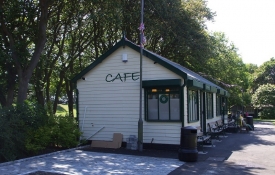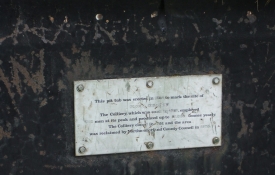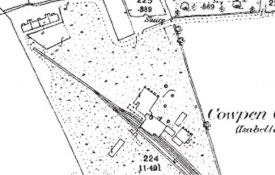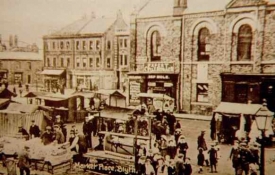Welcome to the Community View section of the website. This area is dedicated to articles of interest, community information and local topics that are submitted by members of the public or guest writers. It is also the main section dedicated to the Youth Media Group Project.
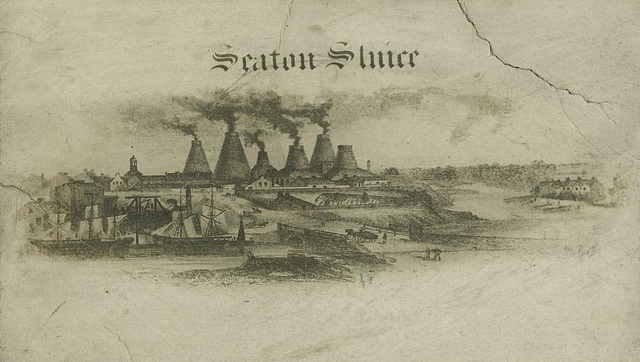
The Earsdon parish register for the 3rd November 1797 recorded the death of William Hempseed, a glassman of Seaton Sluice. The same registers had been recording the baptisms and burials of his eight children since 1764.
Seaton Sluice lies in the very south-east corner of Northumberland. It has a small harbour holding a few pleasure craft and can be described as a sleepy, picturesque coastal village. This was not always the case, however. Seaton Sluice was once the hub of thriving early-industrial activity.
So why was William living at Seaton Sluice? Where had his family originated from? What did a glassman do?
| Seaton Sluice c1860 overlain on Modern Satellite Imagery |
The Royal Hartley Bottleworks was opened at Seaton Sluice in 1763 by the landholders, the entrepreneurial Delaval family. William Hempseed appeared listed as a resident of the area just one year after the opening. It can be presumed he was one of the first employees of the company. The websites of the Seaton Sluice and Old Hartley Local History Society and the records of the archaeological Sites and Monuments index onwww.keystothepast.info give useful summaries as to the life and times of the Bottleworks.
Seaton Sluice was ideally situated to be a busy industrial centre. A natural harbour, established sea transport routes and the abundant supplies of sand, kelp, clay and cheap coal were available at this location. All the ingredients needed in the manufacture of glass. In 1764 the Delavals also carried out a major engineering feat in creating an artificial harbour, hewn out of solid rock, and known locally as "The Cut".
Crossing the modern bridge across the Seaton Burn south into Seaton Sluice you will be travelling right through the centre of the Bottleworks site, which was eventually demolished in 1897. Parliamentary permission was obtained for the use of twelve acres for the factory and accompanying village.
Rapid expansion meant that by 1777 the Bottleworks was the largest glass manufactory in England and produced in this year one million seven hundred and forty thousand bottles. Keystothepast.info states on the site there were:
...workers houses, market place and a brewery. A central warehouse was connected to the glass houses by an underground narrow gauge railway, reputed to be the first in the country to run on iron rails and was designed by George Stephenson. Further tunnels connected the glass houses to the river banks for slag tipping. Another tunnel ran from the warehouse to the harbour to transport bottles to ships.
Some of the tunnels still exist, but are rarely visited. They were used as air-raid shelters during the 39-45 war. It would appear that it was a self-sufficient community: most of the provisions needed could be purchased on site. The Delavals also provided a doctor for the workers, and their families', needs being paid for with a deduction from employees' wages. The self-contained community buildings became known by locals as "The City".
 |
| "Market Place" |
The Seaton Delaval and Old Hartley Local History Society state:
The first glass houses were 70 metres long, 15 metres wide and 11 metres to the roof. As expansion took place these were replaced by three round coned furnaces which were more efficient, and eventually six cones dominated the skyline. For administration purposes each cone was given a name; Gallagan; Bias; Charlotte; Hartley; Waterford and Success.The large cones of the furnaces were something of a landmark to passing ships.
Glass is produced, at the simplest level, by heating sand and lime, with some other minor chemicals, to a very high temperature until a molten product is obtained. (Hence the furnaces.) This can then be shaped into various products.
